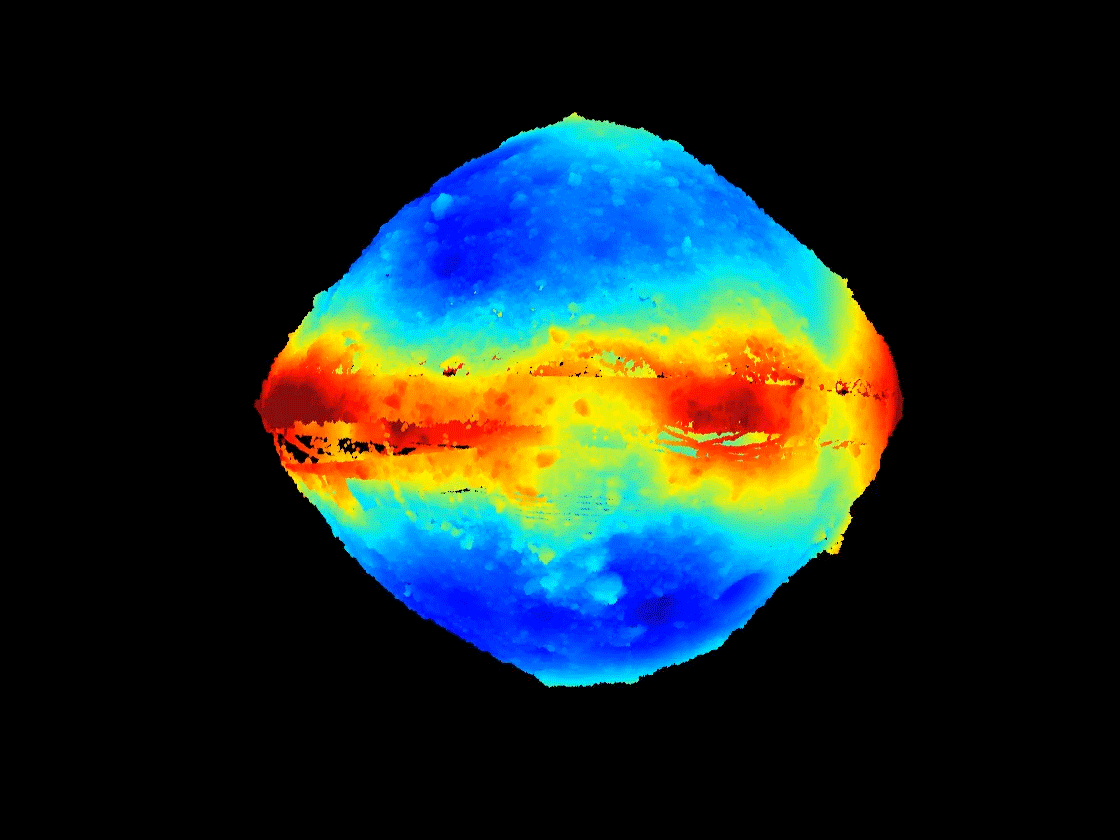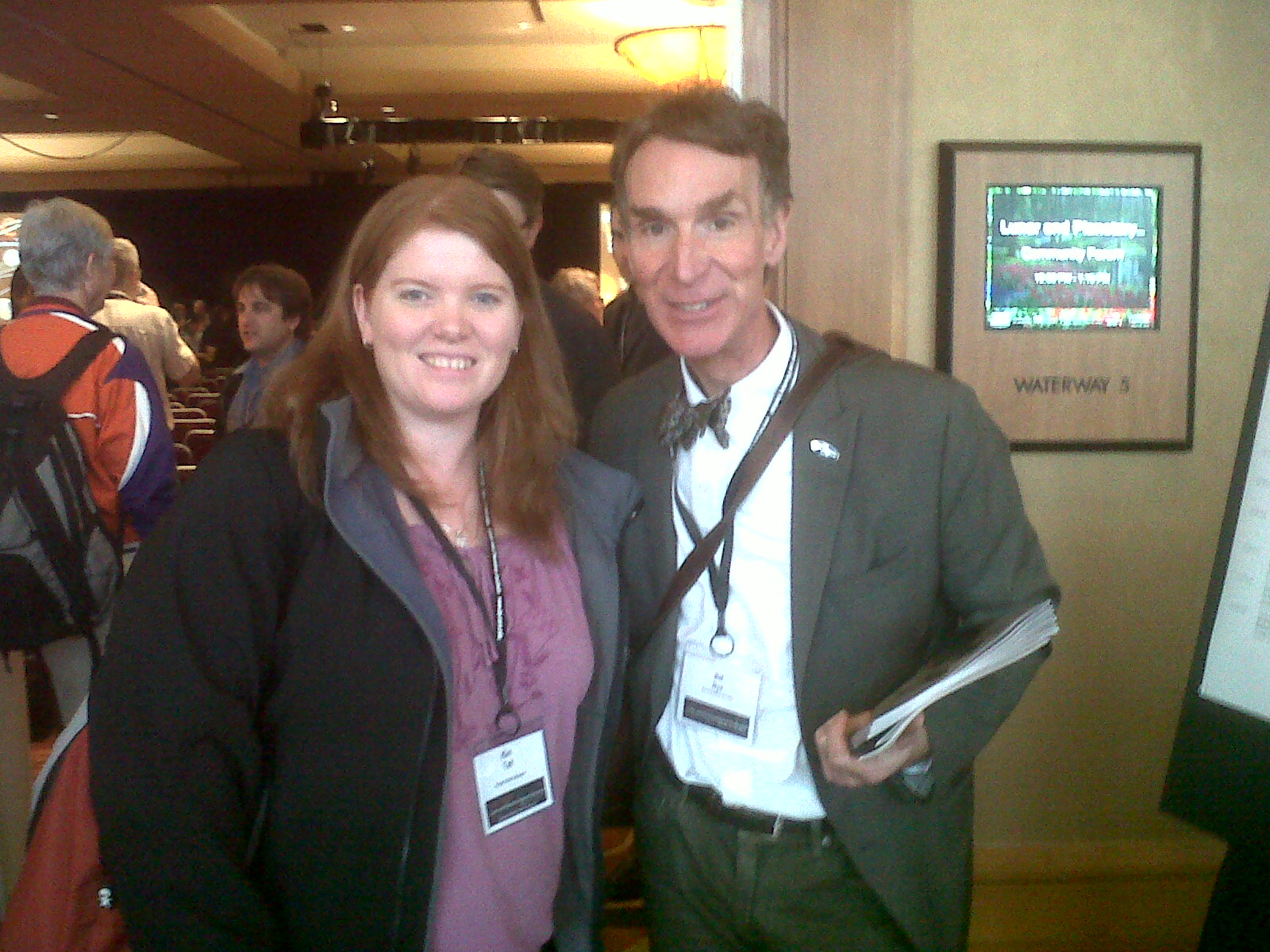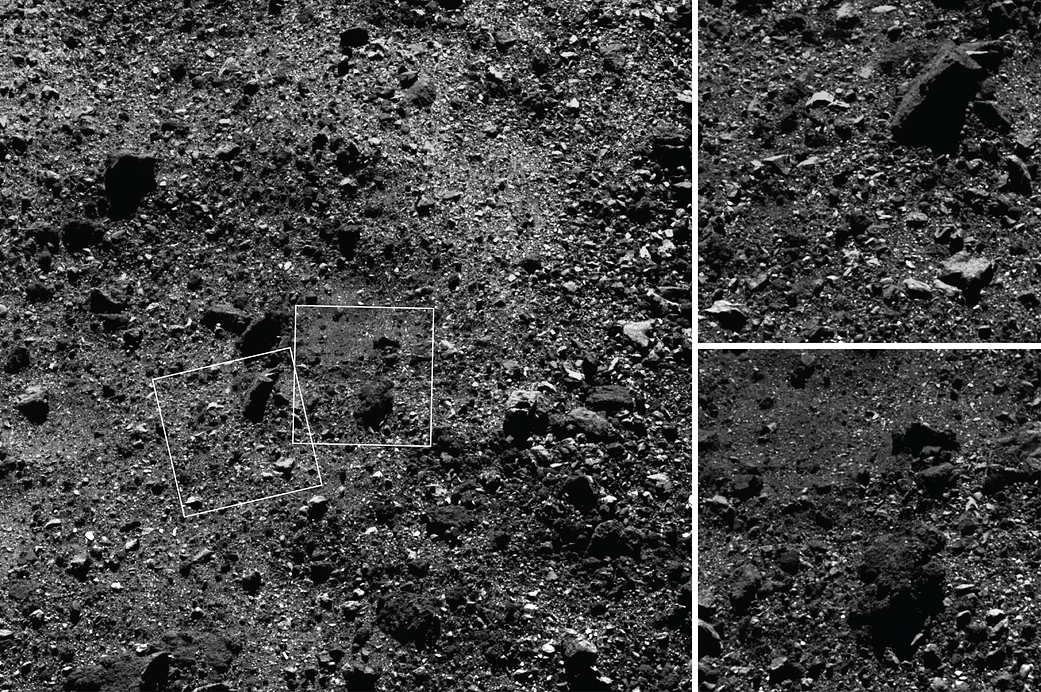Have you ever wanted to shoot lasers in space? Do you know that Canadians are doing that right now? OSIRIS-REx is a NASA-led mission that launched on September 8, 2016 and has traveled to a Near-Earth Object called Bennu, which is thought to have formed over 4.5 billion years ago, and has remained relatively unchanged since then. OSIRIS-REx reached Bennu in August 2018, and in October 2018 started a survey of the surface of the asteroid to measure its global properties, identify strange or unique features, and scan the surface for potential sites to touch down and collect material to bring back to Earth in 2023.

First 3D lidar map of asteroid Bennu created by Canada’s OLA instrument.
Credit: NASA/University of Arizona/Canadian Space Agency/York University/MDA
Dr. Kim Tait

Dr. Kim Tait is the Senior Curator of Mineralogy at the Royal Ontario Museum and a collaborator on the Canadian OLA science team.
Dr. Michael Daly

Dr. Michael Daly is the Canadian Science Team Lead for the OSIRIS-REx Mission and the Lead Instrument Scientist for OLA. He is the holder of the York Research Chair in Planetary Science and the Director of the Centre for Research in Earth and Space Science.
One of the 5 instruments on the mission was built in Canada, by MDA and Teledyne Optech, It is a laser system that is able to scan the asteroid from up to seven kilometres away called the OSIRIS-REx Laser Altimeter (OLA). From February 12-17, 2019 OLA made more than 11 million measurements of the distance between the spacecraft and Bennu’s surface as it orbited the asteroid at less than 2 kms above the surface – the closest orbit ever achieved by spacecraft. OLA obtained these measurements by firing a laser pulse at the surface of the asteroid and measuring the amount of time it takes to bounce back to the spacecraft, creating a 3-D model of Bennu’s surface.
OLA will take nearly a billion more measurements throughout 2019 to create a complete LIDAR map of a near-Earth asteroid. This information will help researchers and mission planners select the best location from which to gather a sample of the asteroid to bring back to Earth.

Left: OLA’s electronics box.
Right: OLA’s sensor head which holds the two lasers that fire short laser pulses and a receiver that captures the returned beam from the surface of Bennu.
Credit: NASA / Goddard / Debora McCallum

Credit: NASA/Goddard/University of Arizona


